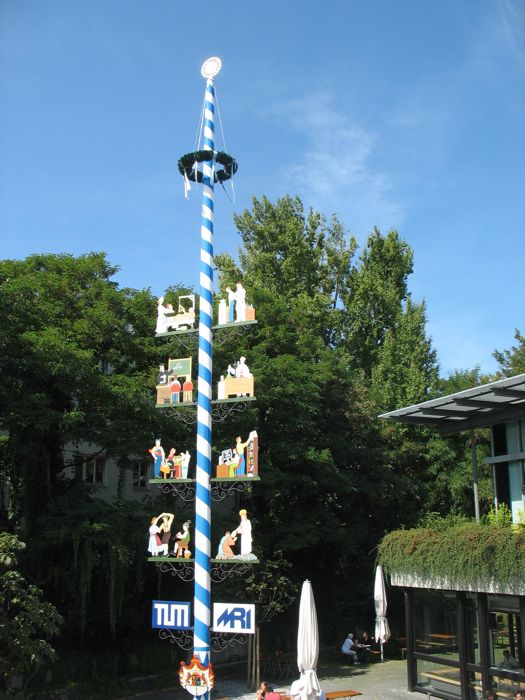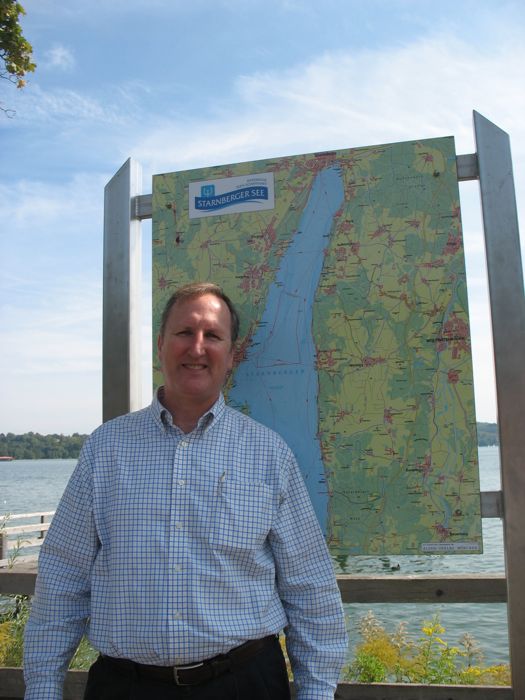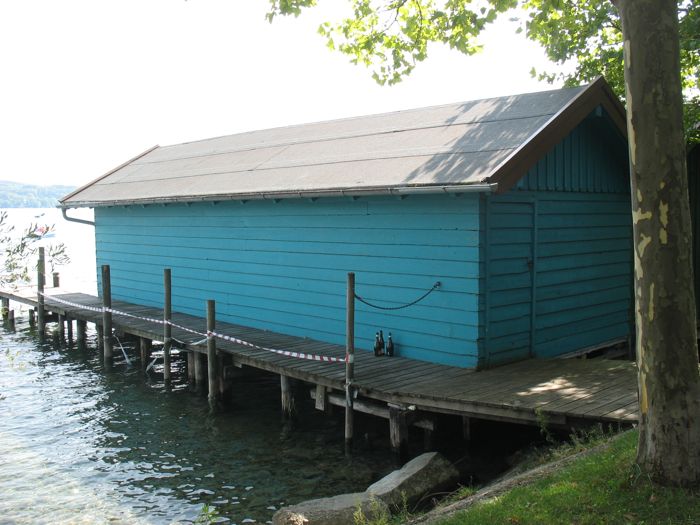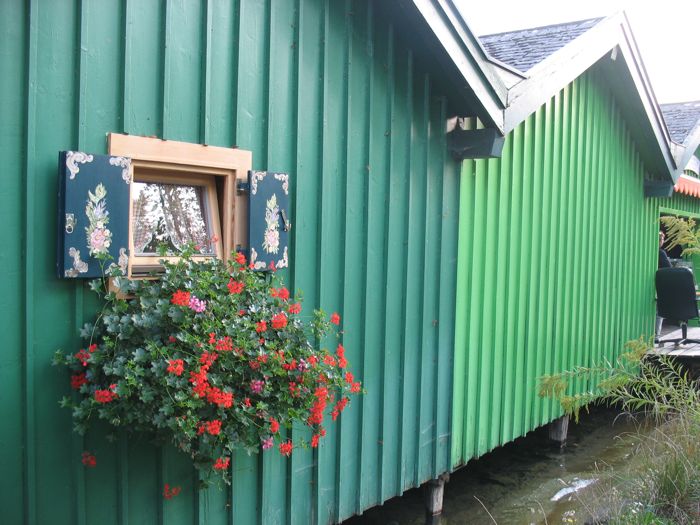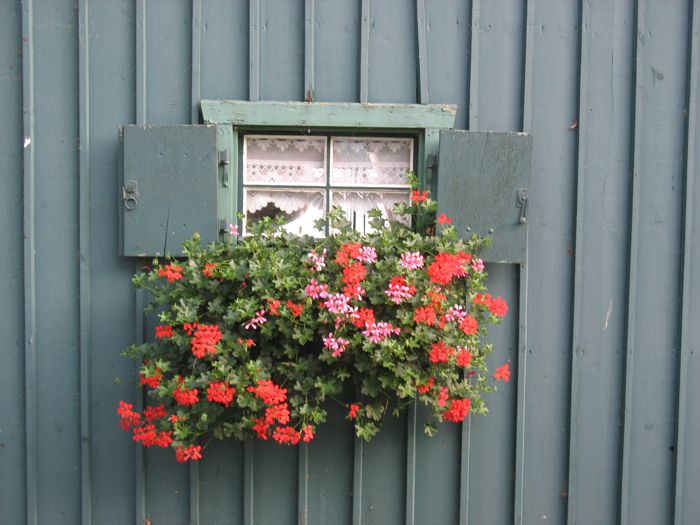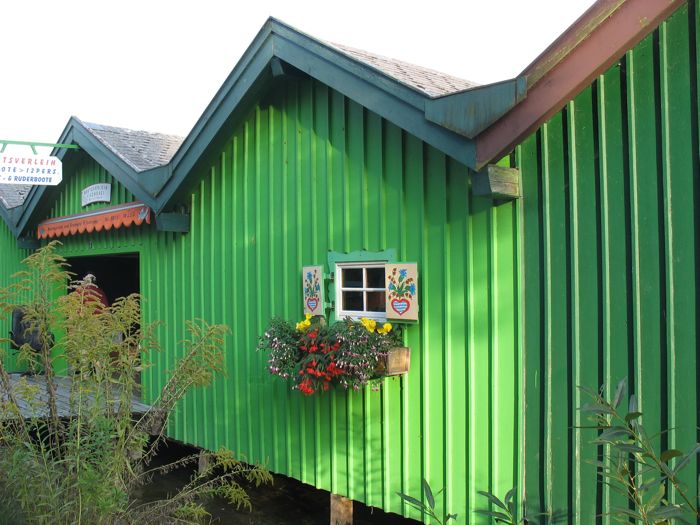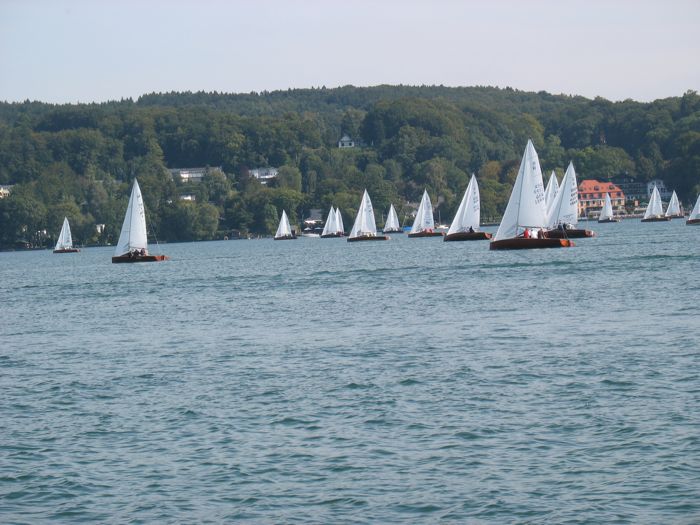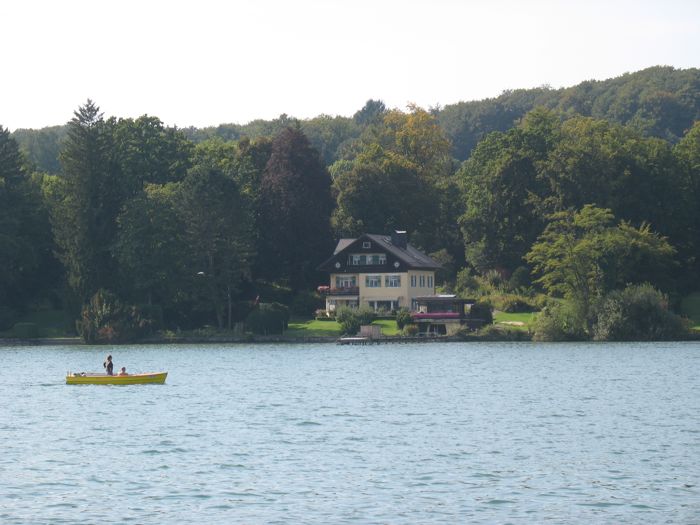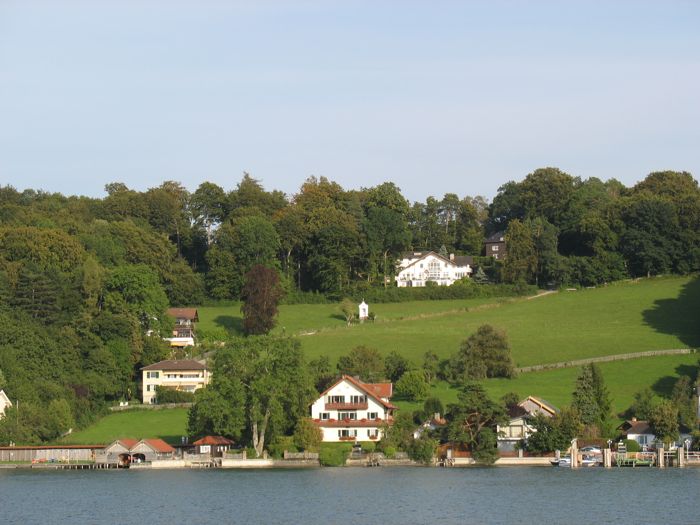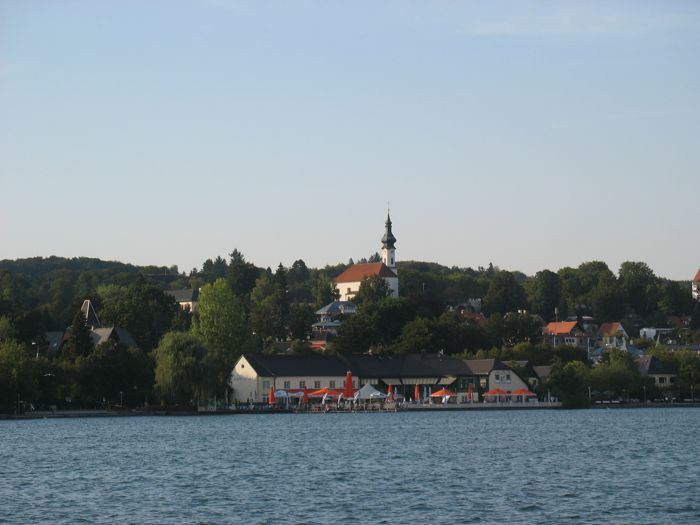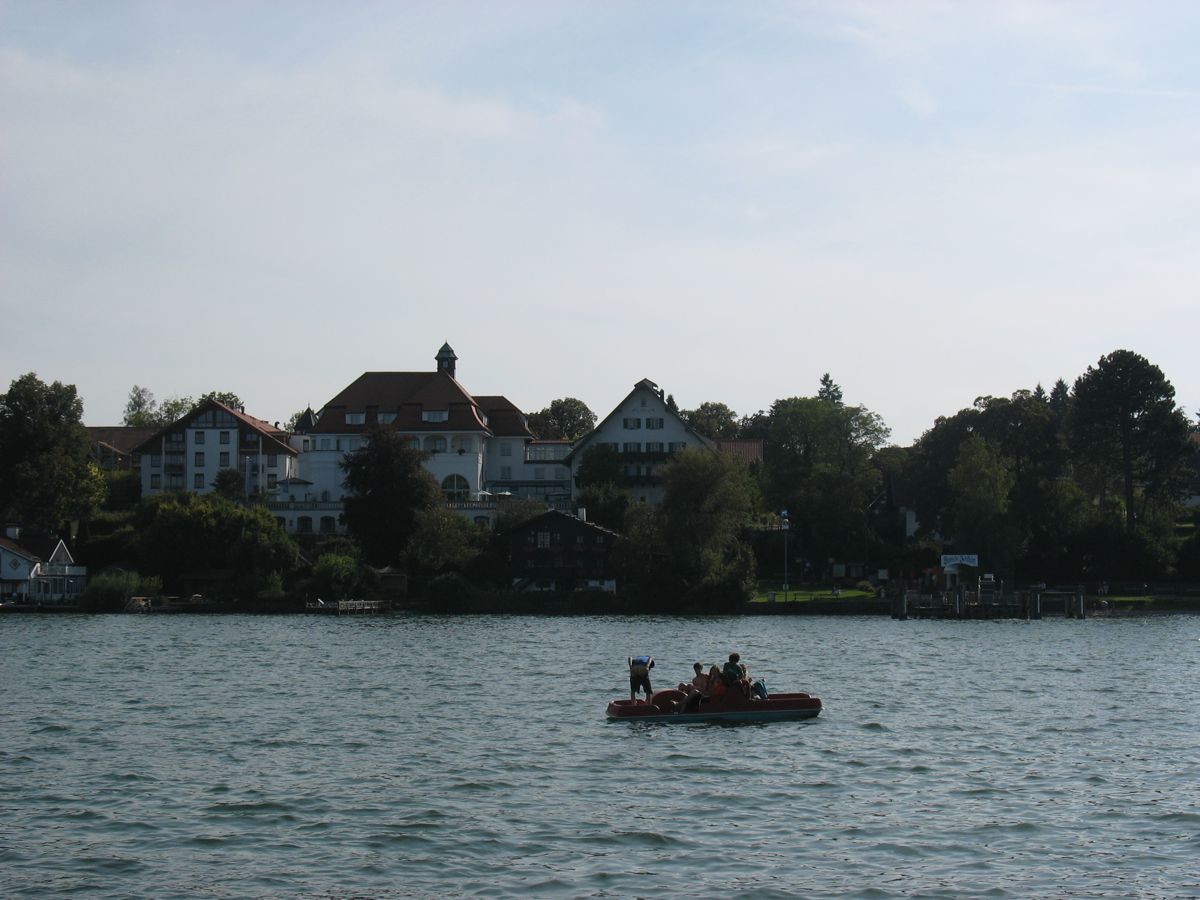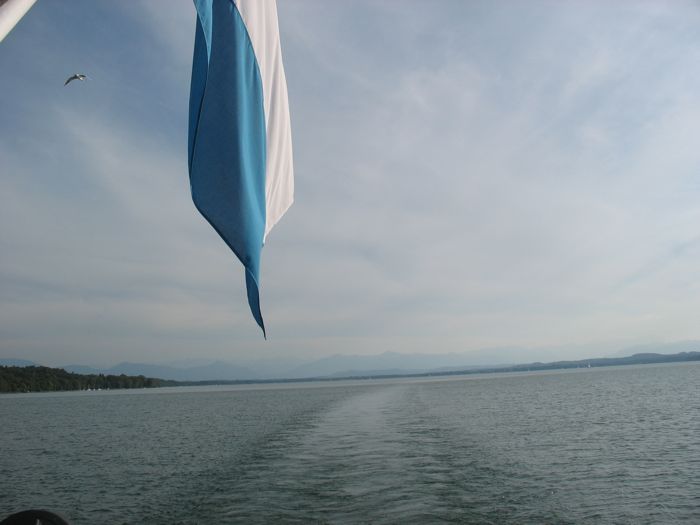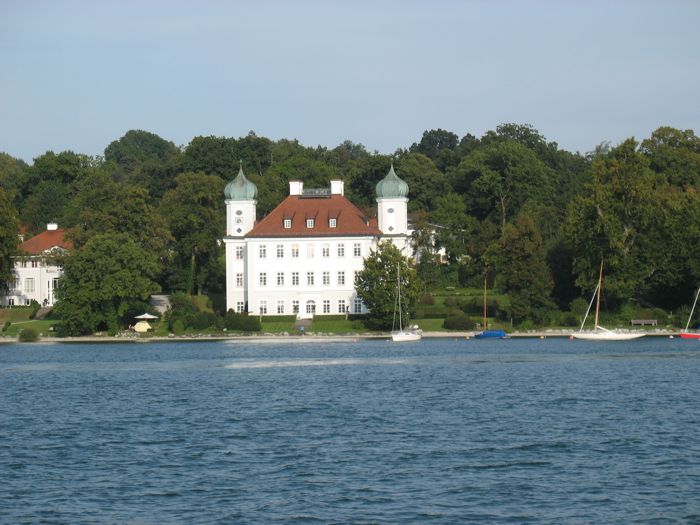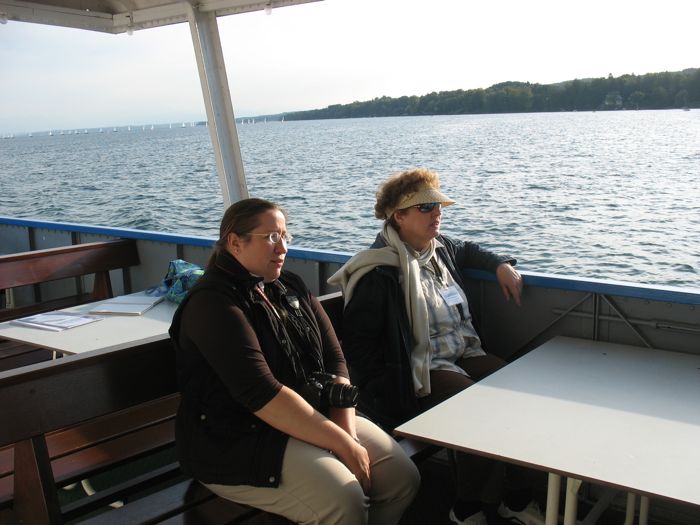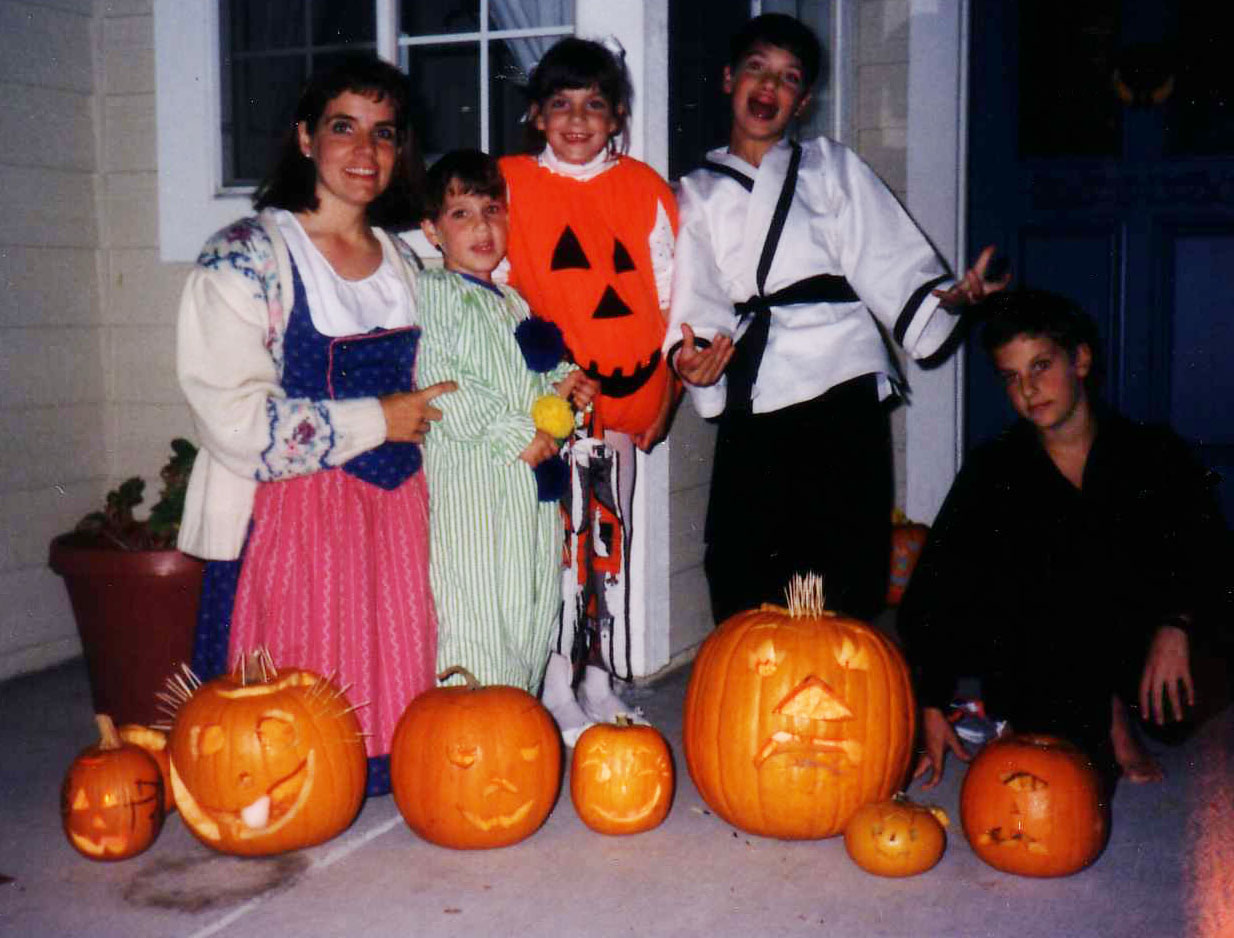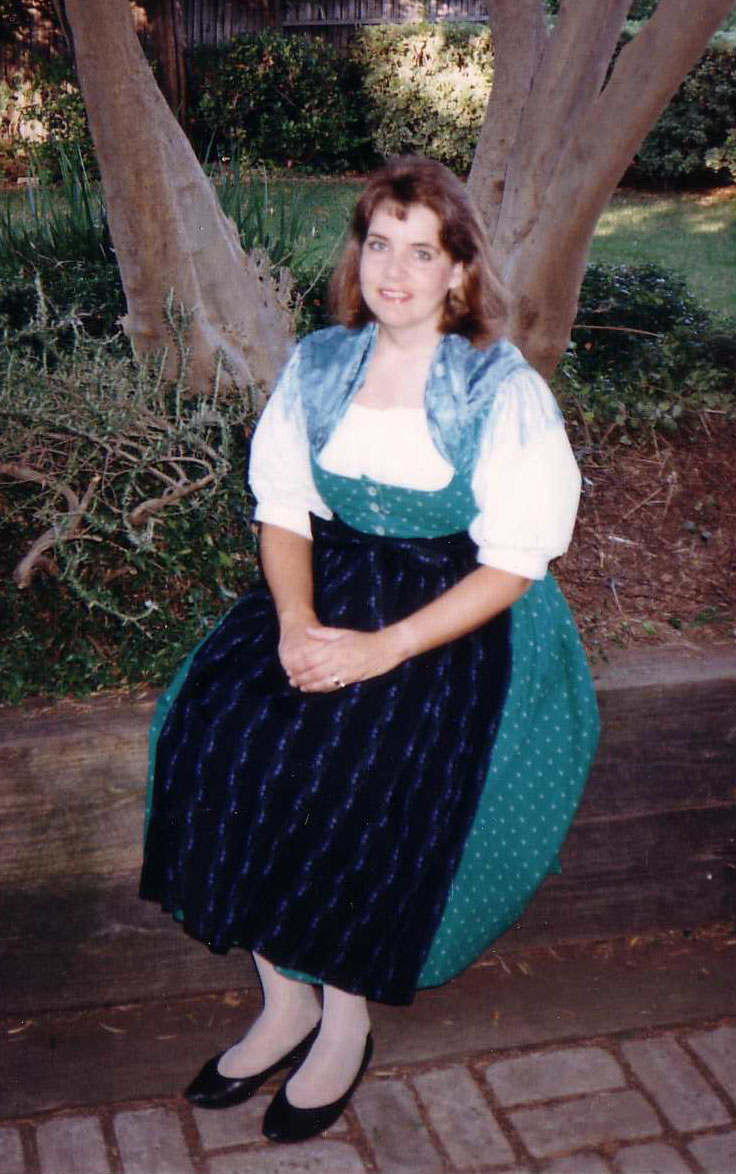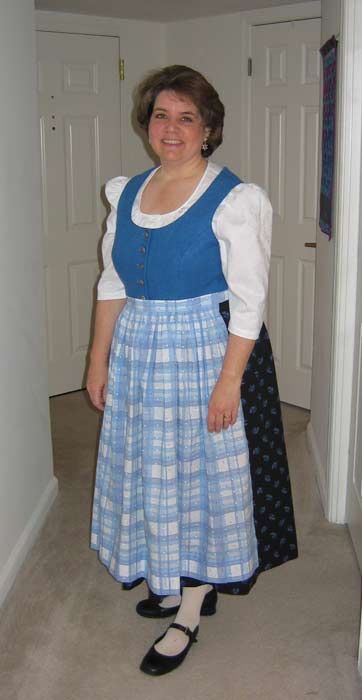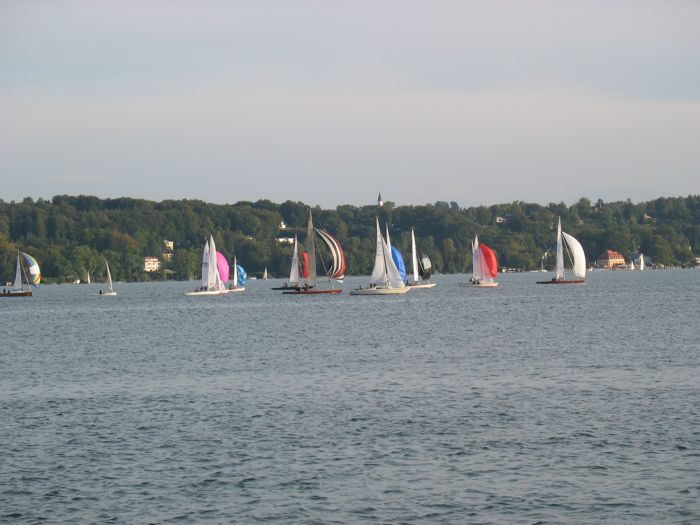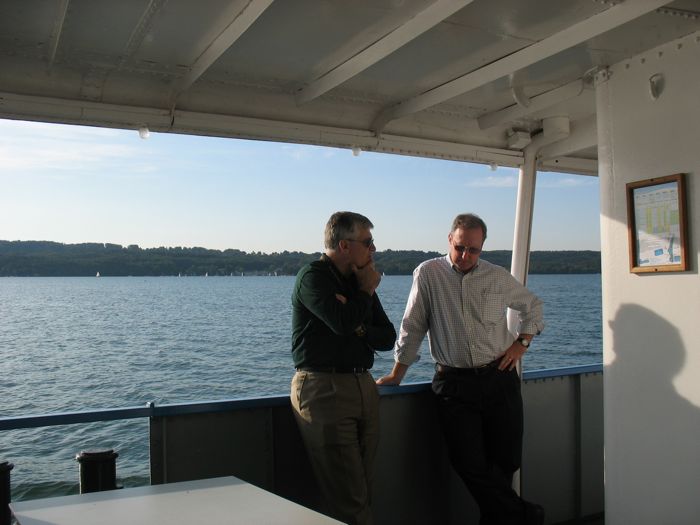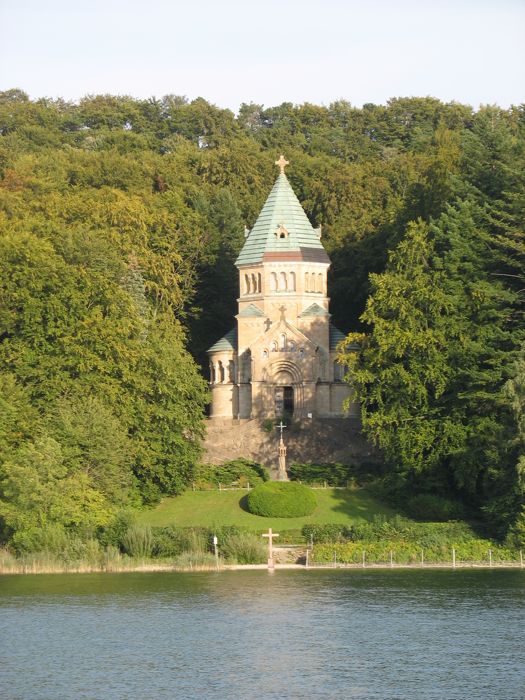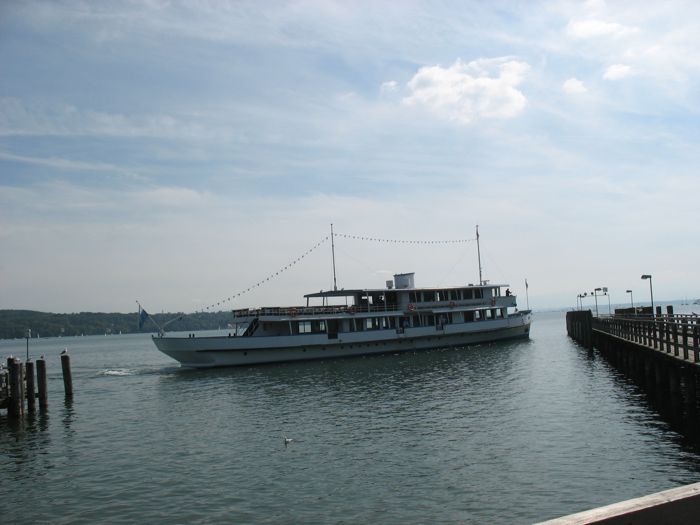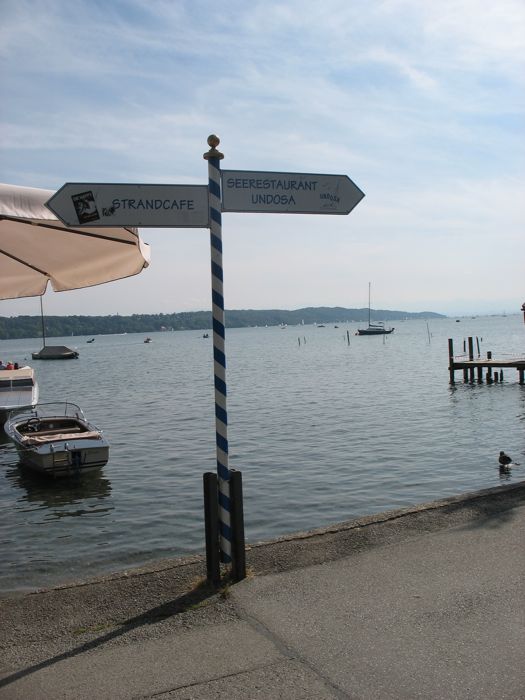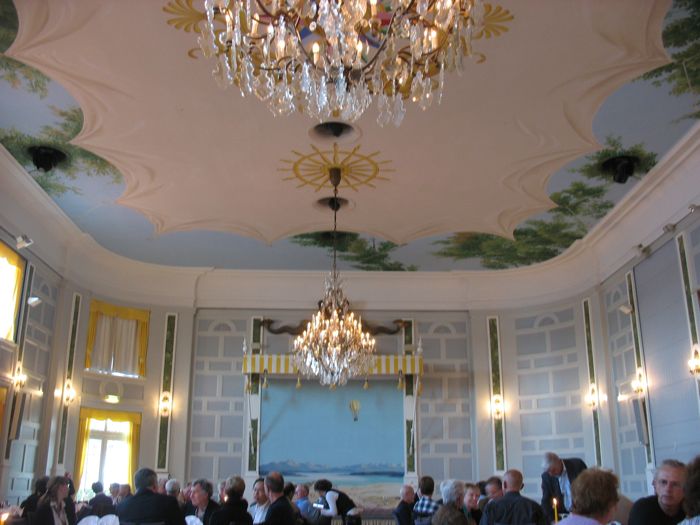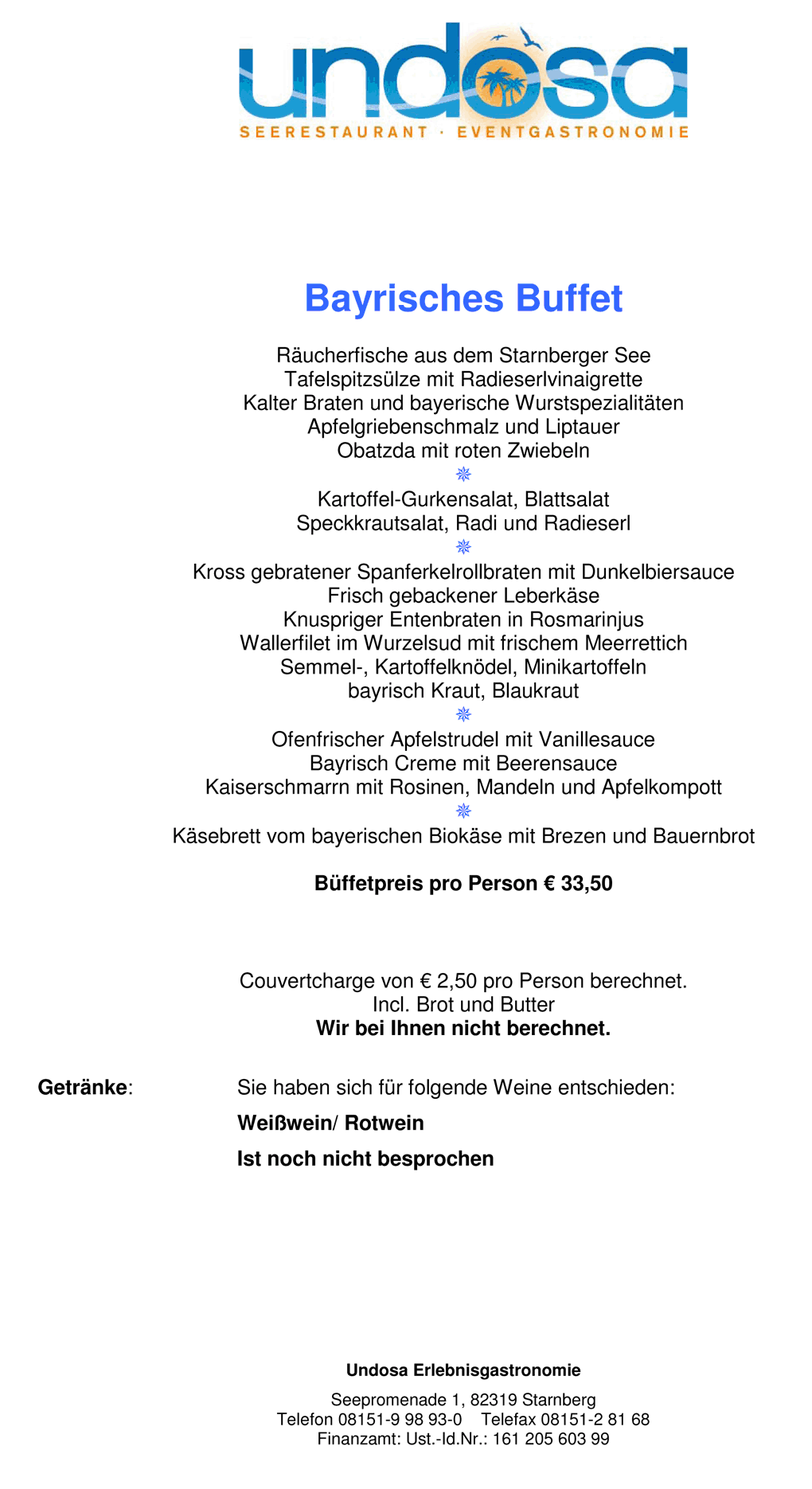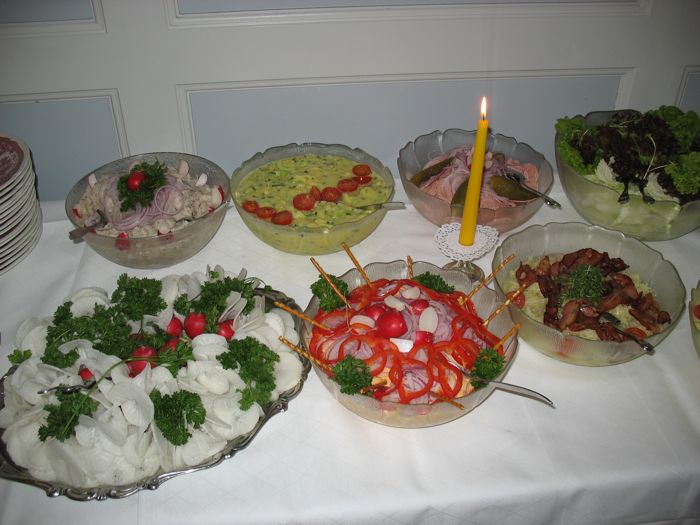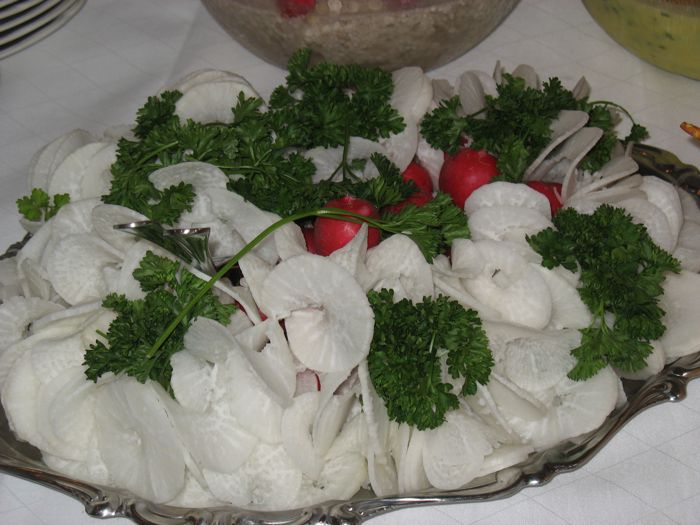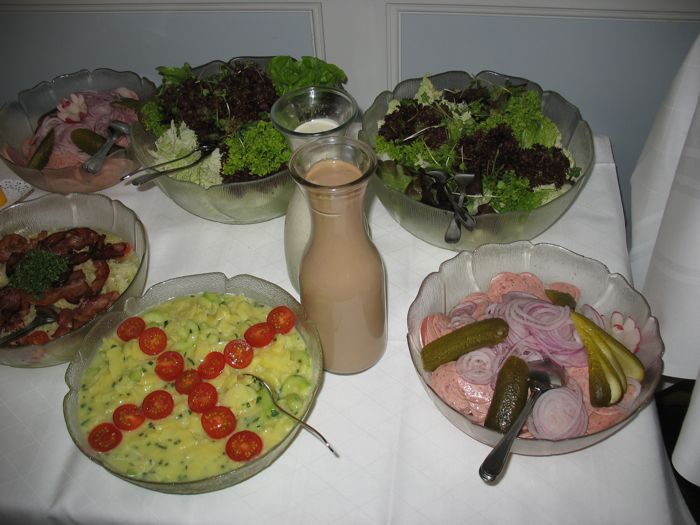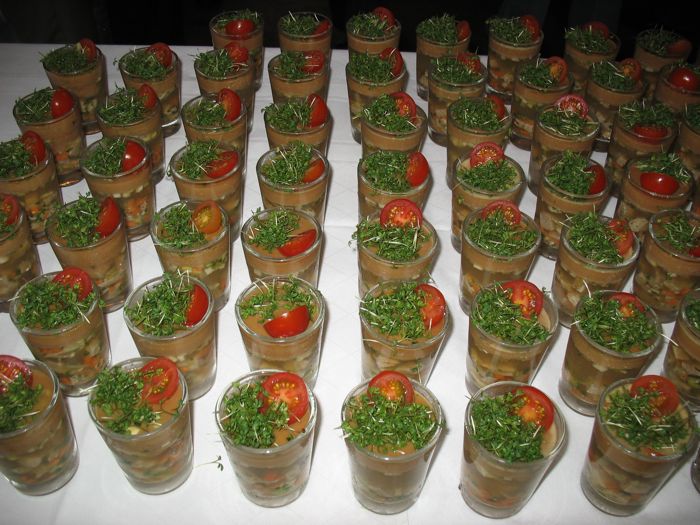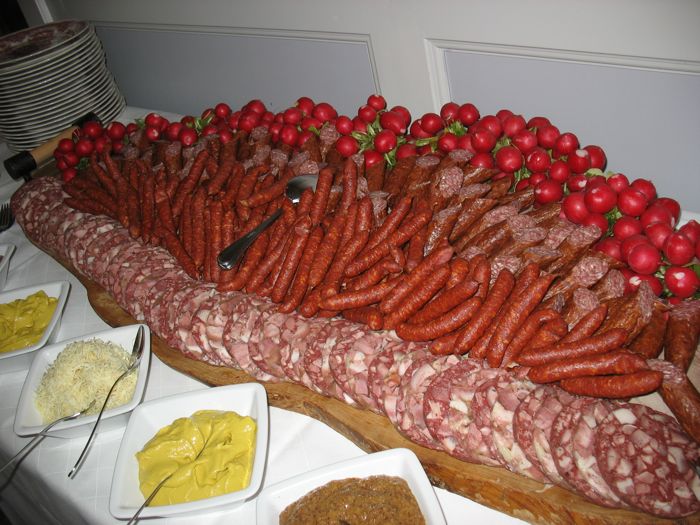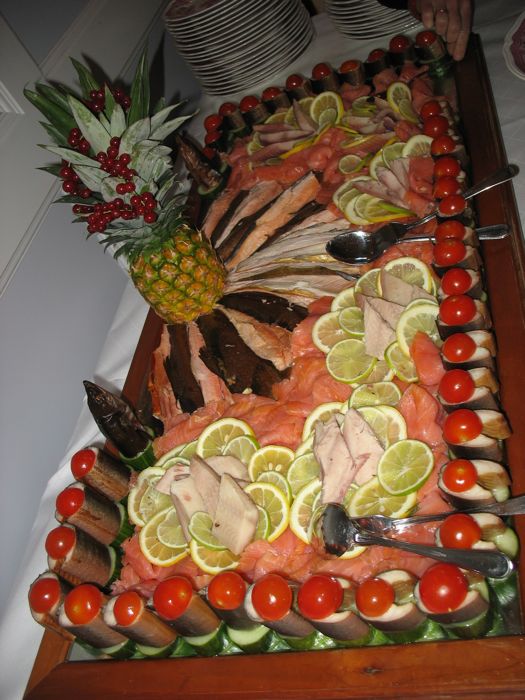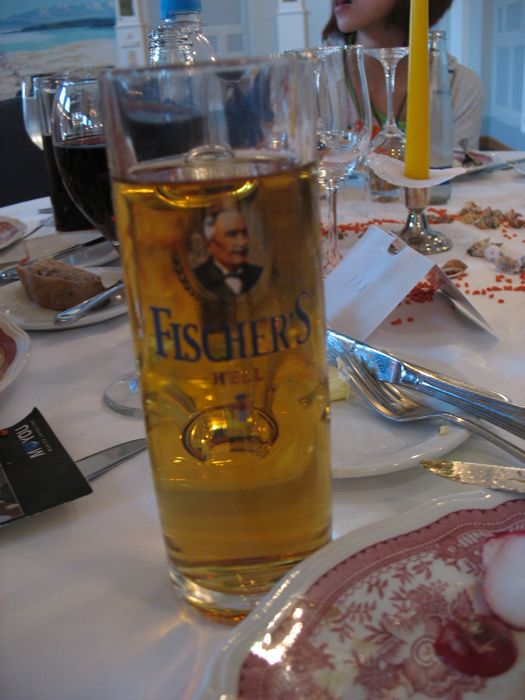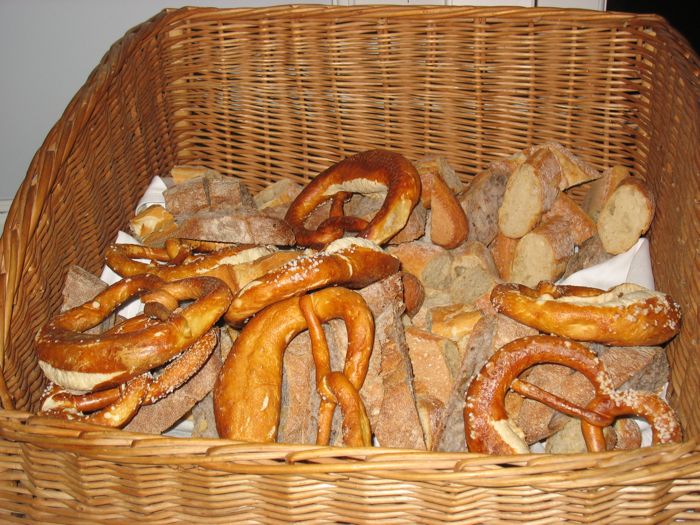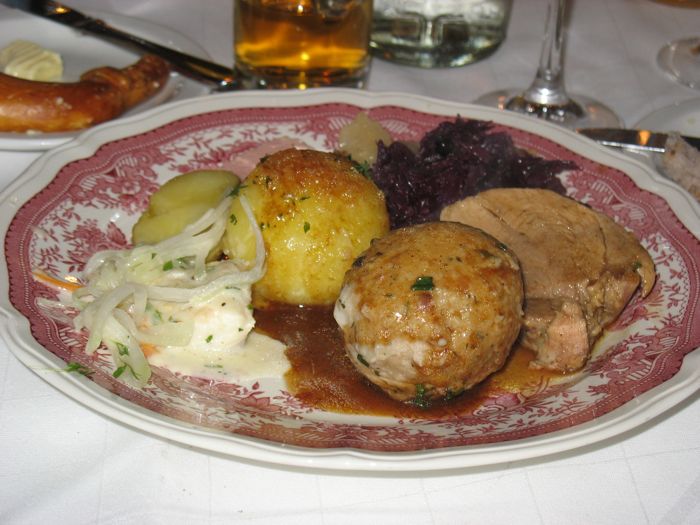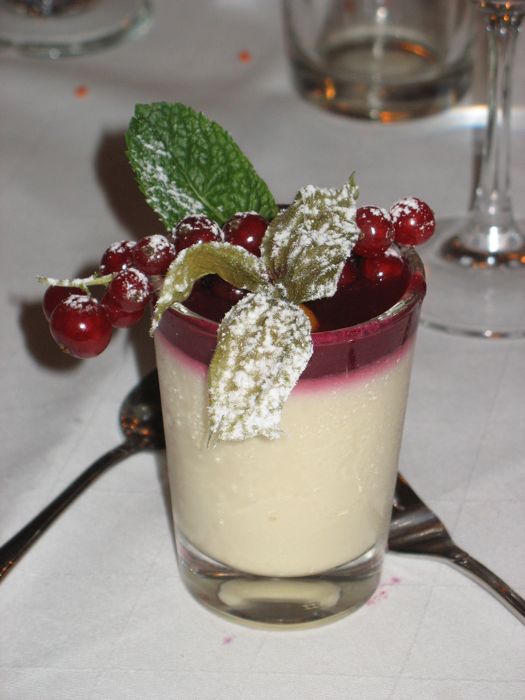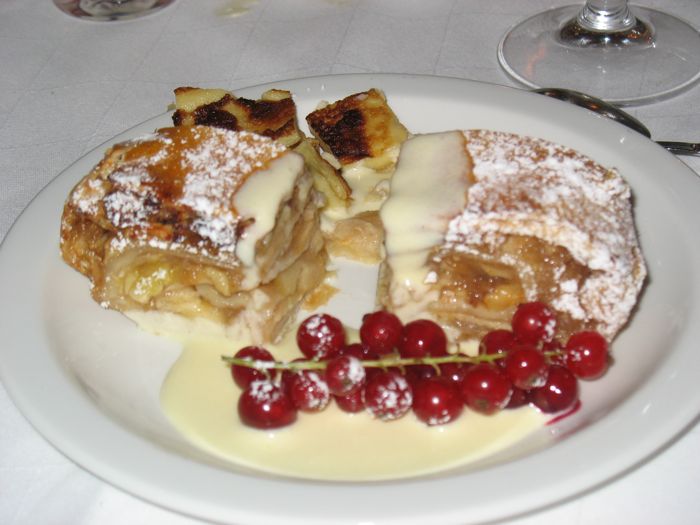Look closely at this decorated May Pole, and instead of townspeople, merchants and animals, you see doctors, nurses and hospital beds. This is in the courtyard of the Klinikum, where we all met for our outing to Starnberger See, a lake near Munich. We bunched up into groups of 6, received a Metro ticket from Patricia and Isabel (the conference’s chief Go-To Organizers) and were off en masse to the S-bahn, via the U-bahn (the train systems) to the Starberger See, about 45 minutes or so outside of Munich. This was the place where lots of early nobles built their summer homes, and now, lots of noble scientists were going to go on a lake cruise for a few hours.
Dave shows us the sign.
We arrived a bit early, so we walked up and down the waterfront. I liked the boathouses, in their shabby, painted finery.
Drinks were free on the boat, so the bar was immediately enveloped in a crush as tall glasses of Munich’s finest beers were poured. 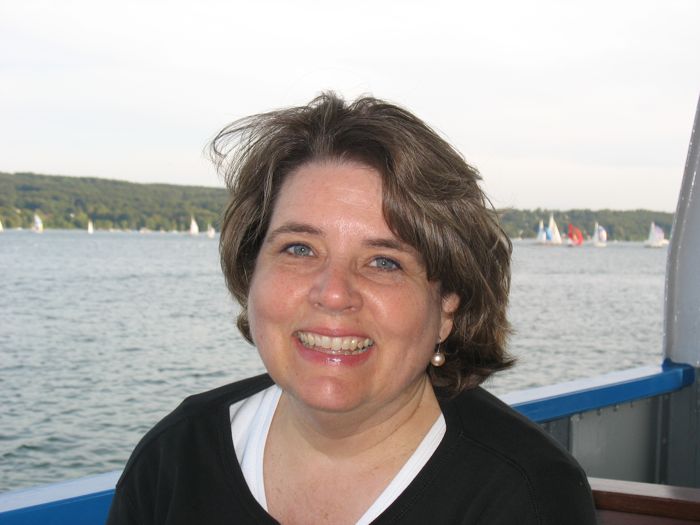
I waited for a while, got a ginger ale, planted myself on the lower deck (away from the crowds upstairs in the warming sun) and wrote in my journal, while watching the scenery and talking with Patricia and Isabel, the women who keep the conference machinery well-lubricated and running.
Sailboats running in some sort of regatta.
These Bavarian-style houses dotted the shores, interspersed with thick green forests. Oktoberfest was right around the corner, the weather was warm for September, and the cold had not yet arrived to start the leaves turning colors. Everyone was in a good mood.
At the southern tip of the 13-mile long lake is the town of Seeshaupt, complete with teenagers who like to moon tourist cruise boats (click to enlarge). No, I didn’t realize this was what they were doing until later that night when I loaded up the photos into Dave’s computer and burst out laughing. I apparently have some relatives who are fond of mooning others–I wonder if they’ve also been captured on film by unsuspecting tourists.
Looking out past the end of the boat, the Alps are a fuzzy blue ridge. Apparently on some days, they are seen clearly.
On the eastern shore lies Schloss Ammerland, built in the late 1600s by King Ludwig I was bequeathed to a Franz von Pocci, a musician, author and poet. Good deal for a poet.
Patricia, in the visor, is originally from America, but married a German and has lived her most of her adult life. Patricia was the main organizer in the past, but has now turned the reins over to Isabel (in the foreground). They are very interesting women, and I asked them many questions about what I had seen while in Munich. Given my fascination with the dirndl, I asked them if they had dirndls. Oh no, they said, they are very expensive. Most women do not have them. I told them I had three. Three?!? I made them all, I said, and they are in three different sizes, dependent upon when I’d gotten the fabric.
The first one I made was from fabric brought to me by my sister Susan and her husband Tom when they were on a study-abroad program when they were young marrieds. This was taken in 1988, obviously Halloween. When I made that one, I called up a return missionary from Germany who lived in our ward and asked him for translation. I remember him struggling over the word for “bias binding,” which was probably not in the missionary discussions.
The second one I made after my honeymoon in Austria with Dave. I looked, and I don’t have one of me standing up, so this will have to do. The Austrian women in Salzburg wore theirs with a scarf that they tucked in the sides of the bodice. I now wear the scarf loosely tied.
The third one I made while in Washington, DC, upon returning home from Munich in Fall 2004. I struggled and struggled with the pattern directions which were all in German. If only I’d looked in our Burda pattern books here in the States, I would have found one in English. But it was done then.
As we approached Starnberg and the end of our 3-hour cruise, the sailboats unfurled their spinnaker sails, making for a colorful display.
The scientists had a chance to talk their science, settle questions, re-affirm friendships. Dave takes time with a colleague.
One last sight on shore: the commemorative cross for King Ludwig II. One evening, he went for a walk with his physician but later, both were found dead, floating in the water. The physician had scratches on his face, and the mystery was never solved. Every year fans of this king meet here on the anniversary of his death. Ludwig himself said: “I wish to remain an everlasting mystery to myself and to others,” and apparently he has succeeded.
We land and walk around the lake to our restaurant.
Yep. This way to Undosa Restaurant.
We ate in the main dining pavilion, which had a ceiling painted like we were outside in a tent, and had a stage at one end. But no Bavarian tuba band showed up to serenade us. We were at a table with several people from Japan, which made for interesting dining. Items we looked at with curiousity, they happily tried. Here’s the menu in German:
Translation: All You Can Eat Cholesterol, but Very Delicious!
This table was first, with a variety of salads, and pickled vegetables, and a big bowl of fresh green lettuce, and some other very tasty things that you will lead you to think about diets when you go home from Munich.
Close-up of the radishes. They were enormous, crispy and not to spicy. Very good.
The item in the lower right is some sort of small, thinly sliced bologna item–I’m sure it’s a wurst derivative, and the yellow dish was potato salad like you’ve never tasted before–very good.
In between the salad and the next course were these little glasses filled with gelatin-ified chunks of meat and sausage. This was the item that most Americans passed over, but that the Japanese tried.
This meat tray took two people to carry it in. Mustards and sauces in the front, radishes in the back, sausage and etc. in the middle. Quite a spread.
This was the fish course with salmon, smoked chunks of fish standing on cucumbers with tomatoes for hats, smoked fish in the center underneath the pineapple, and all decorated with citrus slices and some sort of dry white fish. The layout and the variety and the amounts were stunning. This board must have been 3 to 4 feet long by about a foot-and-a-half to two feet wide.
Free drinks! If you’d read my other posts, where I mention the cost of beverages in Munich, you can understand my excitement to get my bubbly apple juice for free. This was very good.
We had these giant pretzels–I think they call them bretzels–and chunks of brown bread for our bread plate. I LOVE those pretzels and had them as much as possible while in Munich.
So at this point, we are saying Uncle Uncle Uncle!! but keep eating because this course is the amazing combo of a semmelknodel and a kartoffelknodel and roast potatoes and slow-roasted pork and amazing red cabbage kraut, but if I could have wrapped it up in tin foil to go, I would have.
Patricia and Isabel had ordered a traditional Bavarian feast for us, and the quality of the food was topnotch. We weren’t done though.
There was this–a Bavarian Cream with red currant jelly and red currant garnish. I’ve never tasted anything so creamy and amazing–perhaps it’s the German version of a Creme Brule, but more amazing. (Did I already say amazing?) The serving size and the serving spoon were both miniaturized, for good reason, because there was more.
Apple strudel with vanilla sauce and a dessert kind of like a cinnamony saucy cut up bunch of pancakes.
What a repast! but we had to skip the last course of cheeses because we had to catch the train back to Munich. So, regretfully we left this amazing dinner (many thanks to Isabel and Patricia) and made it to the train with 3 minutes to spare.
We probably should have walked home to Munich to walk off this meal, but it remains a delightful memory.
